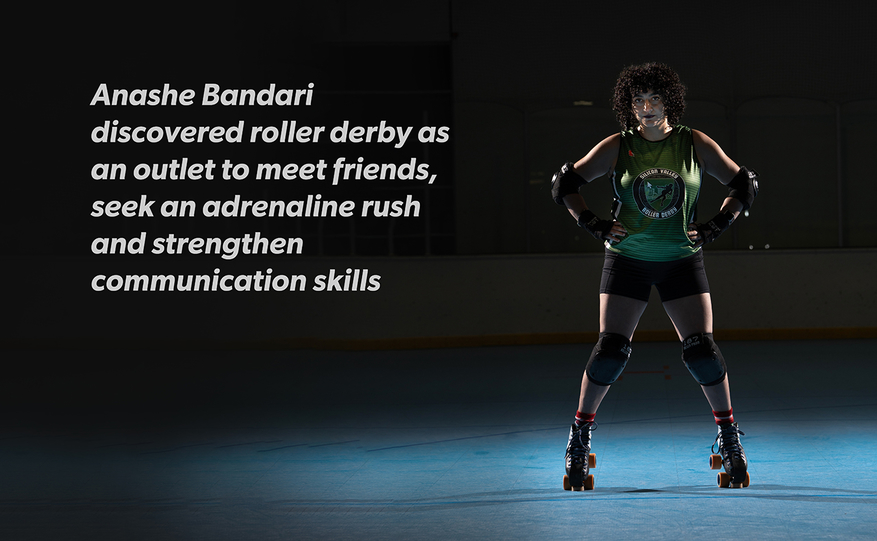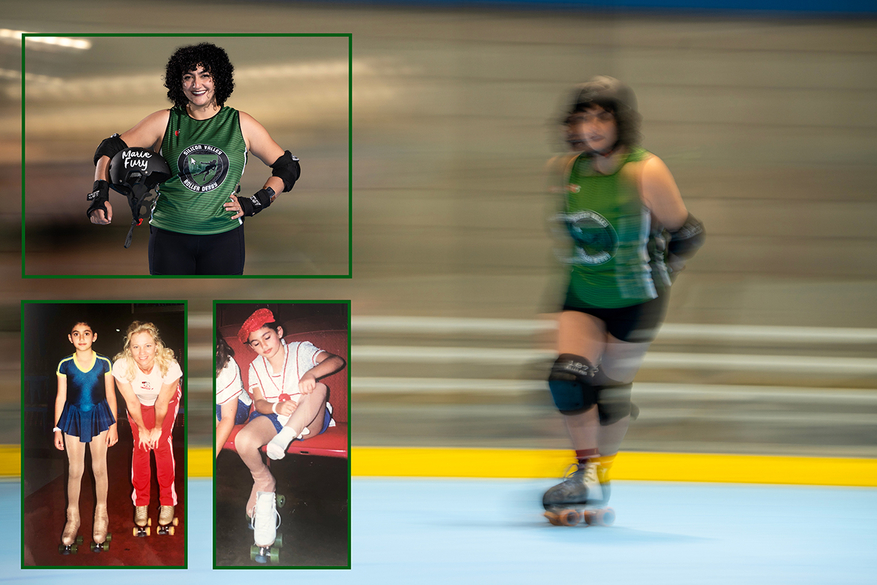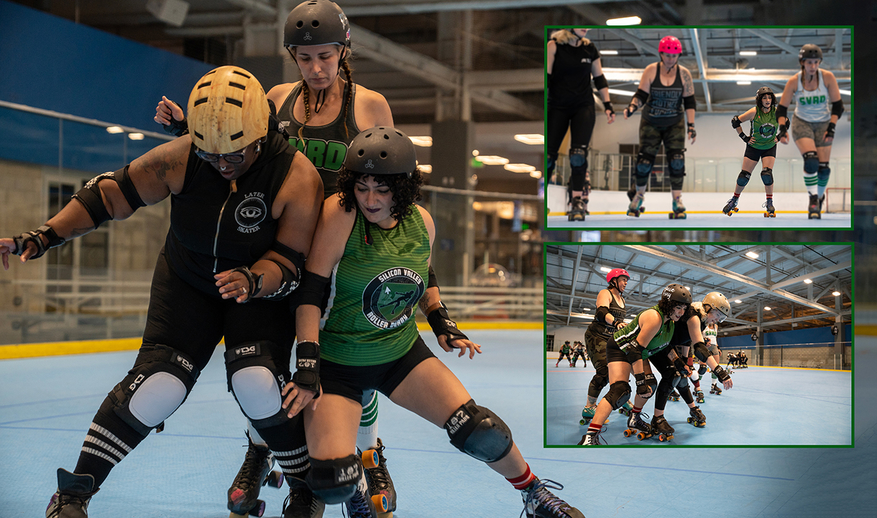Bumps, bruises, blocks and an occasional tumble don’t stop Anashe Bandari from competing in roller derby, a full-contact sport played at breakneck speeds on eight wheels.
What started as an outlet to meet new friends while getting away from her physics studies has now turned into a weekly competition for Bandari, a writer for Lawrence Livermore National Laboratory’s Technical Information Department. Her roller derby passion started five years ago while attending graduate school at William & Mary in Williamsburg, Virginia.
“I felt as if I was lacking in a strong camaraderie of women,” Bandari said. “I was having a hard time and really struggling, so I decided to see what roller derby was all about.”
She headed to a local rink in Virginia and joined a team, though that was not her first time on skates. As a kid, Bandari did a type of skating called precision skating, which is essentially synchronized figure roller skating. She was based out of Moonlight Rollerway in Glendale, California and she competed mostly at regional competitions around California.
“I started skating when I was 6 years old and continued until I was 12, when I broke my ankle — not skating, ironically,” she said.
After recovering from that injury, she continued skating in a less-formal capacity. She took lessons on and off, but mainly just for fun. Her first job was at the roller rink when she was 17.
“That job really enabled me to spend a lot more time on wheels and helped reignite the flame,” she said. “Working at the rink gave me free access to any of the public sessions and discounts on private lessons, and I met a lot of people that did different types of skating. I kept going back to work there every summer I was home from college.”
Currently, Bandari is part of Silicon Valley Roller Derby, a team that meets in San José, where she serves as a blocker. Bandari is known as Marie Fury, a play on Marie Curie and her number is 96, the atomic number for curium. Even though the Curies didn’t discover that element, it’s named after them and fits in with the theme.
“My teammates call me Fury for short, which I think is kind of funny because I don’t think I’m very furious,” she said.
As Bandari explained it, a roller-derby match takes place on an oval-shaped track with two teams, each with five people on the track at once. At the end of each two-minute round, the five skaters rotate out for a break and a new set of five from the team rotate in. Four of the team members are dubbed blockers and the fifth is called a jammer.
“The way the game works is the jammer scores points by lapping the opposing team’s blockers,” she said. “As a blocker, your goal is to stop the other jammer and when possible, to help your jammer through. Usually there are three people skating forward and one person that is skating backwards. This is not the rule, but it is the efficient way that usually works out.”
For the thrill of it
Bandari described roller derby as an adrenaline rush that takes over and helps her forget how scary it can be skating going up to 15 miles per hour on wheels. She especially likes going fast when her favorite skating song, “Don’t Stop Me Now” by Queen, is playing, which she said has come a long way from her first routine when she was six at a Christmas show set to “Frosty the Snowman.”
“When I think about roller derby while I’m not playing, it sounds terrifying,” she said. “It sounds pretty crazy to willingly put myself in this really vulnerable position playing an aggressive, dangerous, full-contact game. I just love skating and I’m happy to be there with my teammates working together and feeling strong and capable.”
She said roller derby is very much a mental game, with a clear focus on communication.
“It’s one of those things where when you’re thrown in the moment, you kind of just stop thinking and your muscle memory takes over and you’re a lot better at it than you thought you were,” she said. “No matter how many times you’ve done it, it is always going to be terrifying to be standing on wheels and waiting for someone to hit you.”
She said roller derby, which started in the 1930s, is a lot safer now than it was in the 1970s. She said it is a lot more formal now, which includes having a governing body with an emphasis placed on safety, even though obviously it’s still dangerous.
Communication is key
Bandari said communication with other team members is important when working together to block the jammer, who is skating around fairly quickly.
“You have to be ready for her coming back through in maybe 10 seconds,” she said. “You really have to perform and try to figure out which direction she will go and you’re ready to hold her there. A lot of communication goes into it. And that’s something that I feel everyone can work to improve.The communication aspect is really big, especially for the person who is skating backwards.”
Bandari is usually the person who is seeing the skater come in and has to vocalize commands such as “Hey, guys, we’re gonna move left, we’re gonna move forward.”
Communication is something that carries over to her job as a science writer as well.
“Being a team player to me is being sure to contribute your own skills in favor of what the larger team needs to accomplish,” she said.
Bandari said that, overall roller derby is less intimidating than it seems and encourages those who are interested in taking part in the sport to do so.
“It’s a really, really welcoming community, I always think of it as a home for misfits and people that are looking for camaraderie. If you’re interested in doing it, there’ll be a place for you,” she said. “Roller derby is a healthy outlet and I can be calm in the rest of my day-to-day life. I just love it and it makes me feel strong and powerful and proud of what my body can accomplish.”
– by Michael Padilla







